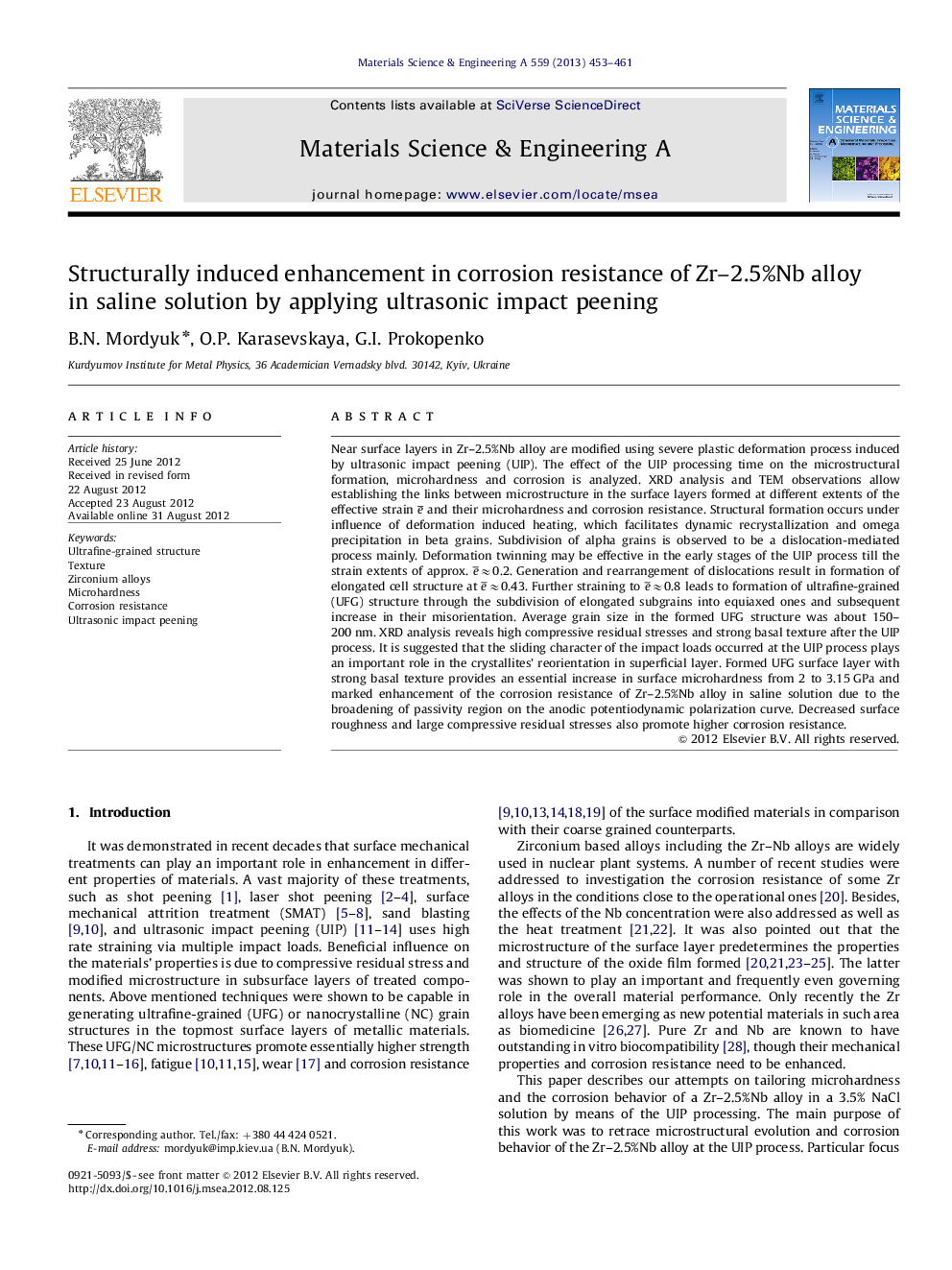| Article ID | Journal | Published Year | Pages | File Type |
|---|---|---|---|---|
| 1576684 | Materials Science and Engineering: A | 2013 | 9 Pages |
Abstract
Near surface layers in Zr-2.5%Nb alloy are modified using severe plastic deformation process induced by ultrasonic impact peening (UIP). The effect of the UIP processing time on the microstructural formation, microhardness and corrosion is analyzed. XRD analysis and TEM observations allow establishing the links between microstructure in the surface layers formed at different extents of the effective strain e¯ and their microhardness and corrosion resistance. Structural formation occurs under influence of deformation induced heating, which facilitates dynamic recrystallization and omega precipitation in beta grains. Subdivision of alpha grains is observed to be a dislocation-mediated process mainly. Deformation twinning may be effective in the early stages of the UIP process till the strain extents of approx. e¯â0.2. Generation and rearrangement of dislocations result in formation of elongated cell structure at e¯â0.43. Further straining to e¯â0.8 leads to formation of ultrafine-grained (UFG) structure through the subdivision of elongated subgrains into equiaxed ones and subsequent increase in their misorientation. Average grain size in the formed UFG structure was about 150-200 nm. XRD analysis reveals high compressive residual stresses and strong basal texture after the UIP process. It is suggested that the sliding character of the impact loads occurred at the UIP process plays an important role in the crystallites' reorientation in superficial layer. Formed UFG surface layer with strong basal texture provides an essential increase in surface microhardness from 2 to 3.15 GPa and marked enhancement of the corrosion resistance of Zr-2.5%Nb alloy in saline solution due to the broadening of passivity region on the anodic potentiodynamic polarization curve. Decreased surface roughness and large compressive residual stresses also promote higher corrosion resistance.
Keywords
Related Topics
Physical Sciences and Engineering
Materials Science
Materials Science (General)
Authors
B.N. Mordyuk, O.P. Karasevskaya, G.I. Prokopenko,
